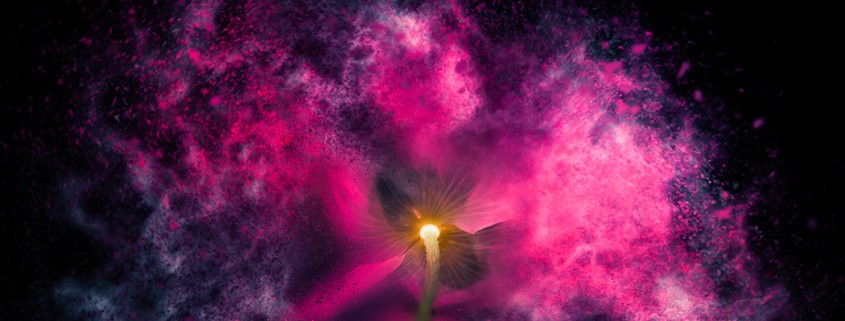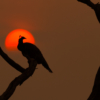Creative Post Processing ideas for Flower Photography
Creative vision often helps you overcome the numerous challenges you may face with nature photography such as bad lighting, lockdown, and restrictions in travel. Most of us have been stuck at home for months due to COVID-19. And the way things are going, we will be stuck inside for a while more. So why not use creative flower photography to help fight off the cold, boredom, fatigue, and loneliness we’re all feeling? Now is a great time to experiment with new flower photography techniques and you don’t need fancy equipment or subjects to spark your creativity. All you need is a vision – even a blurry one will do.
I don’t feel the need to leave my home to scratch my creative itch with flower photography. I love photographing flowers but I want to make them look more interesting. For these creative flower photography experiments, you need the right kind of source images and the right kind of post processing techniques. I usually do not start out with a clearly defined finished image in mind. I keep my mind and heart open to let the creativity flow through me. Sometimes I surprise myself with some crazy end results.
Getting into Your Creative Zone
If you’ve spent all day at your desk, move to a different space. After a day of working from home, I heat a kettle of my favorite tea, turn on some music (country, folk, rock, or sometimes even some upbeat dance music ), and let my mind and eyes wander. I find I’m most open to taking creative risks when I can relax into my space. Get comfortable and use this time to discover something new about yourself and your flower photography.
Flower Photography with White Background
You need the right workspace for capturing flower photos. A home studio is nice but any corner of your home will do. For my indoor flower photography I use the lightbox for white backgrounds and translucency. However, a light box is impractical to use when you are outdoors. You can use a diffuser and a backlit subject to create a clean white background for outdoor flower photography.
I shot this poppy on a roadside in Asheville, NC. Selecting a flower that was backlit by the sun, I placed a diffuser between the sun and the flower to give it a clean white background. This casts a cheery glow through the pale pink and white petals and showcases the translucency.
Wind can be an issue when you are trying to shoot outside but there are ways to counter that. For example, you can
- Increase the ISO. I set mine between 400 and 800 on a windy day. If a photo is grainy, Topaz DeNoise AI is my go-to noise reduction software.
- Use a shallow depth of field for more intimate, creative flower photos. F/16 is a great aperture for landscape photography but it’s too sharp for capturing the true essence of flowers. Remember to treat them as they are… delicate, curvy, and gracious.
- Carry an umbrella to shield the flower. This may cut down on light, however.
- Use the blur to your artistic advantage (intentional camera movement or ICM).
Post Processing Workflow
One of my favorite plugins is Exposure Software (called Alien Skin Software until 2019). I often use Exposure Software’s Bokeh effect. It lets me experiment even more than I could with lenses or other effects such as multiple exposures in camera. With the Focus Regions preset, you can specify areas in the composition to blur and to protect from the effect. There are three different types of regions: Radial, Planar, and Half planar.
Another one of my favorite techniques is to convert the image to LAB color profile and invert it with different channels (Image #2). I might create four or five different versions before settling on what appeals to my eye. I had a choice of either working with the original image or the above image with Bokeh effect and I chose the latter.
Textures are my go-to when I want to change the mood of the image. Adding a painted effect changes the mood drastically. Over the years I accumulated a ton of textures from various sources, both paid and free, and I also create my own textures. Topaz Labs Texture Effects is my favorite way to experiment.
But, wait… I’m not done experimenting.
In India, where I grew up, we celebrate a festival called Holi. During this festival, people throw colorful powders on each other, laugh, gossip, share food, and drinks. I wanted to represent that festival in my flower photography to remind me of the good times. I had this idea for a few years. When I came across a graphic artist demoing the technique on wildlife images, I knew this is what I had been looking for. A convert my flower photo to look like exploding powder that you see during Holi festival. I contacted the artist and bought the Photoshop action from him.
If you are creative and technically savvy, you can create your own Photoshop actions. I personally don’t have the time or brain space to learn how to create my own. Instead, I am happy to buy them from the genius folks who create excellent, inexpensive Photoshop actions. Once I installed the action in Photoshop, I simply had to understand each step and customize the result to produce that effect that I am looking for. A few hours of playing around got me the stunning flower photo that you see here.
It really feels like celebrating Holi back in the day.
Photographing Flowers on a Black Background
I bought these calla lilies from a florist, brought them home, and laid them on black velvet. In flower photography arrangement and composition is essential to create a visual impact. I used one constant light to supplement the natural light coming through the sliding doors in my kitchen. Photographing on black velvet laid flat on the ground is not easy. If you light the flowers, the velvet may catch the light and your background won’t be black. The trick is to use side lighting and underexpose by 2 stops or more to create a clean black background. My lighting was diagonal. I cleaned up the background a bit with an adjustment brush in Lightroom. I used f8 to get enough depth of field to photograph these flowers.
As much as I loved the callas with black background, my mind was craving something different. To keep adding to my Holi project, I sifted through actions available in the market. I came across a few that might interest me. Using these actions in Photoshop or post processing flower photography is not difficult but definitely time consuming. After four hours of trial and error, I had created about five versions of my original calla lily photo. These two captured my attention the most. The first version is called Explode and the second version one is Atomize.
Which one do you like? It is a completely personal choice and taste.
Creative flower photography requires you to have an open and eager mind. Even if you don’t feel creative, you may be surprised by what you come up with – as long as you are willing to experiment. Start with an action that is available online that speaks to you to explore the creative possibilities that speak to you. Try an idea that couldn’t possibly work and see where it takes you.


















